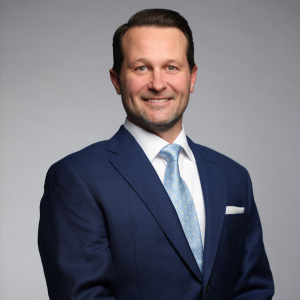Cultural Sensitivity as a Means of Survival
| Cultural sensitivity is not only good unto itself, but an essential tool in risk management and successful staffing |
| The United States has experienced a significant increase in the number of new immigrants entering its borders each year, either legally or illegally, and a resulting growth in the range of cultures. While cultural diversity is the platform upon which this country was built, failure to understand and appreciate cultural differences can, and often does, “unstabilize the melting pot” and cause anger, frustration and diminished self-worth. This is particularly true among the more fragile members of our society, such as the elderly or individuals who are mentally or physically disabled-and these feelings can be further exacerbated when they cannot provide for their own needs independently and are forced to rely on caregivers in a residential or institutional setting. Individuals often express anger or withdraw and retreat into themselves when they are unable to communicate with their caregivers or when they feel threatened by those who are responsible for meeting their needs. Sometimes this frustration and anger results in allegations of abuse and neglect against care-givers, which might have been avoided had providers been attuned to the cultural challenges and barriers that many of our new immigrants routinely face. During the past several years, federal and state governments have taken a more aggressive approach to preventing abuse, neglect and mistreatment in nursing homes and other long-term care settings. The federal government, for instance, recently provided detailed protocols for state nursing home inspectors to follow to determine whether abuse, neglect or mistreatment is occurring in skilled nursing facilities. In the past two years, the use of these protocols has produced a significant increase in the number and amount of civil money penalties levied against nursing homes. Neither the protocols nor federal regulations, however, address the correlation between cultural norms, preferences and expectations, and the increase in alleged incidents of abuse, neglect and mistreatment among different races, classes and religious groups in long-term care facilities. Facilities and providers are left to address each case ad hoc, rather than stepping back to assess the situation and adopt more effective methods of educating staff, residents and families to prevent these incidents. The purpose of this article is to enlighten providers concerning cultural factors, differences and distinctions that might affect their ability to care for frail, elderly and disabled individuals of various ethnic groups, and to guide them in the development of culturally sensitive programs for the people they serve, staff and volunteers. Important Cultural Factors Elderly immigrants often rely on family members for translations. Many family members, though, can’t be available to translate on a daily basis, nor do facilities generally provide translators unless they are readily available on staff. For this reason, administrators, program managers and qualified mental retardation professionals (QMRPs, or case managers) should be trained to ascertain, prior to or upon admission, whether individuals are capable of speaking and understanding English. In geographic areas with large concentrations of ethnic groups for whom English is not the primary (or even secondary) language, facilities should develop networks with government, private and volunteer agencies that can help with communication issues. Facilities must also be sensitive to cultural differences and barriers that staff can face on a daily basis. If non-English-speaking staff members are unable to understand what is required of them, they will be unlikely to provide the expected level of care or service. This situation can be profoundly complicated if both the caregiver and resident are non-English-speaking and are unable to communicate with each other (e.g., Hispanic caregiver and Asian resident). Administrators, program managers and QMRPs must watch for these situations and ensure that some level of communication can be established before making any staff assignments. A number of other, less obvious, cultural factors might affect the provider-consumer relationship in institutional and residential settings. Cultural assimilation is a stressful, often painfully slow, process under the best of circumstances. An individual’s ability to adjust to a new culture can become intensely more complicated if that individual is unable to fully control his or her life choices and decisions, as is often the case in long-term care facilities. This assimilation process can cause extreme anxiety, frustration and depression in individuals with mental and physical disabilities and in frail and elderly immigrants living in long-term care settings. These individuals can become completely despondent and withdrawn or exhibit inappropriate behaviors to gain needed attention. New immigrants might also develop a sense of paranoia, believing that their caregivers are, in some mysterious way, attempting to cause them harm. Staff can become frustrated if individuals are unwilling to cooperate with care as a result of these fears and anxieties. Even so, staff are often unable or afraid to discuss these frustrations with their supervisors for fear of losing their jobs or facing disciplinary action. The longer these tensions are allowed to fester, the more realistic is the possibility that resident abuse, neglect or mistreatment will result. In some cases, when residents feel uncomfortable with their “new family” because of language barriers or differences in social norms, they can feel threatened by different and strange-seeming mannerisms. For instance, caregivers of West Indian descent often speak in loud voices, which some residents might find frightening. Asian caregivers, on the other hand, are often reserved and might not appear to be as personally supportive as some Caucasian or African-American caregiv-ers. This is often because, in Asian cultures, elderly people are viewed as symbols of strength and honor, and it is con-sidered disrespectful to suggest that they cannot care for themselves. Residents might be left alone out of respect, only to have this promote feelings of social iso-lation and depression, and perhaps even perceptions of neglect and mistreatment. Individual and family privacy is perhaps more significant to other cultures than to our own. Asian families traditionally do not share important private or family matters with anyone other than family. Exposing incidents of abuse, neglect or mistreatment outside of the family circle is often considered “taboo,” as it might bring shame to the individual and/or family. Middle Eastern families are very protective of women. Female purity is closely aligned with family honor; therefore, Middle Eastern men will go to great lengths to ensure that women are not “exposed” in a manner that might cause shame to them or their families. Providers must be sensitive to this important aspect of Middle Eastern culture and take steps to ensure that women’s bodies are not exposed to anyone other than care-givers during routine care and procedures. In addition, male nurses and aides should never be assigned to assist Middle Eastern women with personal hygiene or with treatments (such as wound care) involving “private” parts of their bodies. Many Middle Eastern and Hispanic women will not communicate directly with caregivers. Rather, they will communicate their needs through their husbands, brothers or fathers, the authority figures in these cultures. This can lead to significant problems if the authority figures are not available in emergencies or cannot, or will not, accurate-ly describe residents’ problems or concerns to the appropriate caregivers. This unwillingness to share information, if unrecognized and not addressed, can lead to a misdiagnosis or a failure to provide treatment or services. Finally, providers are finding it increasingly difficult to investigate or otherwise address suspicious physical or psychosocial symptoms that could indicate abuse or neglect when the alleged victim is non-English-speaking or is a recent immigrant. Since many cultural groups discourage individuals from sharing personal information with “strangers,” providers must attempt to piece together facts and circumstances in a manner that is consistent with state abuse and neglect reporting requirements. And attempt they must, since failure to do so can, and often does, result in significant civil monetary penalties and criminal and civil litigation. |
| Cultural Diversity as an Asset Providers should view cultural diversity as an asset-a tool for expanding the horizons of many of our most fragile citizens and most educationally deprived staff. When the facility incorporates cultural themes, traditions and customs into its daily programming, residents and staff will have the opportunity to “travel in their minds” to places they might never visit. Providers will also be able to assist staff, residents and family members toward gaining an understanding of different cultural values that could lead to better relationships during the daily routines of facil-ity life. Simple steps such as offering traditional foods, accommodating consumer and staff preferences regarding dress or adhering to daily rituals and traditional customs can play a significant role in easing cultural transitions or interactions. If providers are sensitive to these issues and make an effort to assimilate ethnic diversity into the facility’s culture, the risks of social isolation, depression, and ongo-ing problems and complaints can be minimized. Many providers are using creative approaches to this. One approach that is gaining momentum in skilled nursing and assisted living facilities is the development of “cultural advisory committees” made up of residents, family members and staff. A recent article in Nursing Homes/Long Term Care Management (December 2001, p. 27), described just such a committee at The Hebrew Home in New York City:
This committee periodically features a particular culture in a day- or month-long program, including traditional food, music, costumes and dance. The program also includes guest lecturers and videotapes about ways of life, customs and traditions of the selected culture. By celebrating the various cultural traditions, staff and residents are given the chance to understand and appreciate the positive contributions different cultures make to the environment in which they live and work. Facilities might also offer language classes to residents, family members and staff. They can network with local high schools, community colleges and universities to identify and attract language majors who would like to practice their skills as “teachers” in the facility’s “language program.” The activities schedule or adult day program could offer month-long courses in French, German, Spanish, Swahili, etc. Staff and residents could receive “facility credit” for completed courses and have quarterly “graduation” receptions to honor those who have completed the coursework. This, too, will help “chip away” at the language and cultural barriers that often plague institutional settings. Another low-cost, yet effective, approach to embracing cultural diversity is to develop an “International Reading Room” in the facility. Social service directors or activities coordinators can ask community leaders and civic associations for donations of books, videotapes, maps, posters and pictures from various parts of the world. Old issues of National Geographic or various travel-related books and magazines can be catalogued and arranged by country. Perhaps an old computer terminal could be relocated to the “International Reading Room” to provide Internet access and instruction to staff, residents and family members. Comfortable chairs and tables can make the facility’s “library” an inviting place to spend hours reading and learning about different cultures. A facility might invite volunteers from various religious groups or ethnic organ-izations to serve as “guest lecturers” for a monthly international seminar. The facility should encourage and facilitate participation by staff, residents and family members in cultural activities that occur in the community. Many communities pay tribute to their ethnic populations by holding festivals or gatherings to celebrate and educate the community about the uniqueness of each culture. Another idea would be to ask residents, staff and family members to contribute photographs and family heirlooms to an “international art collection.” Facilities can incorporate cultural diversity training into annual education programs and orientation packages. There is a wealth of knowledge in our libraries and on the Internet that health professionals can weave into traditional clinical training programs. Facilities can develop monthly or quarterly staff discussion groups to encourage them to exchange information and ideas about their own cultural values and norms, and to share fears and anxieties about language and communication barriers. Staff members might be designated as “cultural liaisons” to serve as first points of contact should issues arise relating to cultural differences or language barriers. Conclusion |
| Annaliese Impink, Esq., is a partner in the law firm of Bianculli & Impink, PLC, in Arlington, Virginia. For further information, phone (703) 841-9330. To comment on this article, please send e-mail to impink1102@nursinghomesmagazine.com. |
I Advance Senior Care is the industry-leading source for practical, in-depth, business-building, and resident care information for owners, executives, administrators, and directors of nursing at assisted living communities, skilled nursing facilities, post-acute facilities, and continuing care retirement communities. The I Advance Senior Care editorial team and industry experts provide market analysis, strategic direction, policy commentary, clinical best-practices, business management, and technology breakthroughs.
I Advance Senior Care is part of the Institute for the Advancement of Senior Care and published by Plain-English Health Care.
Related Articles
Topics: Articles , Facility management , Leadership











